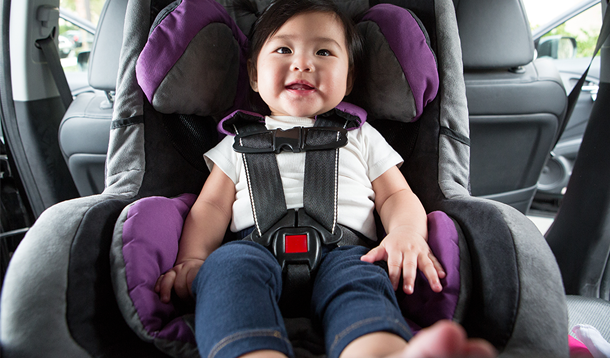
I hate “Mommy-shaming.” There’s nothing worse than armchair parenting experts looking at a photo and criticizing the parent in the photo on the snapshot of their parenting choices. But there is one area that I always say something, and I hope others will as well: Car seat safety.
Car seat safety is not a parenting decision like breast vs. bottle where there is a grey area. Car seat safety is physics and biology, and there are clear right and wrong ways to do it. Moreover, the consequences of doing it improperly can be devastating. So, I risk sounding like “that guy.”
At a recent local spot check, approximately three out of four car seats were being used improperly, an unfortunately common occurrence.
With that in mind, here are some of the most important things to consider with car seat safety.
Carefully read both your car seat manual and your car manual and follow the directions exactly. Abide by height and weight limits for both the seat and the latch system of your car. Remember that weight limits for latch include the weight of the seat and are usually reached before the child outgrows the seat, so check your car manual carefully.
The seat should not move more than one inch side to side along the belt path when moved with the force of a firm handshake. With very few exceptions (check your manual) do not use latch and seatbelt at the same time, choose one.
Certified car seat safety technicians are worth their weight in gold. While police officers and fire fighters are great resources for many things, car seat safety is not always their speciality. Avoid getting checked at a station unless the person checking is also certified as a car seat tech. In Canada, make sure the technician is a member of the Child Passenger Safety Association of Canada (CPSAC).
Follow some trusted car seat experts online. My favourite go-tos for keeping up to date with safety info and seeking advice are Car Seats for the Littles and Li’l Squirts. Both have websites and active Facebook pages.
For rear-facing children, straps should be coming from at or below the shoulders, while forward-facing children should have straps that come from at or above the shoulders.
Chest clips should be level with the armpits. Melissa Box from Li’l Squirts recommends the “Tickle Test.” If you can put your fingers across the chest clip and tickle their armpits, it’s in the right position.
Straps should pass the “Pinch Test.” Place your thumb and index finger on the collarbone and try to pinch the straps. Your finger should slide on the straps. If you can pinch the fabric of the straps horizontally, they need to be tightened.
There is some wiggle room here. For example, it is considered safe for a child to face forward once they are two (under two is five times less safe, and a high risk for neck injury) but it is still safer to stay rear facing until either the height or weight limit of the seat is reached.
The same is true for moving to a booster. A child who is at least five (occasionally four, but it is rare), who has a good belt fit and the maturity to sit in the right position at all times is safe in a booster, but if they are still within the limits for harnessing, it’s best to keep them there.
Most children are not ready to ditch the booster until they are at least 10 or 11. CSFTL has a great 5 point check to see if your child is ready.
This includes car seat covers like Bundle Mes, strap covers that did not come with the seat, head supports, mats under the seat, etc. One notable exception is car seat covers that slip over top of the seat like a shower cap, which are allowed. When in doubt, check with the car seat manufacturer.
Instead of a winter coat, choose a thin fleece hoodie, car seat poncho, or raincoat that allows you to tighten the straps properly. Bulky coats can compress in a crash and cause the child to be ejected from the seat.
Check your manual for specifics, but generally speaking, car seat straps should never be submerged in water or wiped with anything stronger than mild soap or a baby wipe. If you use a car seat cleaning service, make sure they are experts in car seat safety.
Never use an expired seat. If a seat has been in an accident, replace it immediately. Most car seat manufacturers say to replace even after a minor accident, check with the company for specific guidelines.
Never check a car seat on an airplane. Even better, use it on the plane for your child and keep them safe in case of turbulence.
Unless you are getting it from a person you would trust with your child’s life and can verify that it has never been in an accident, has always been cleaned correctly, etc., resist the urge to buy or rent a used seat. A car seat is required by law for rental cars and Ubers, and while it is legal in many places to not use a car seat in a taxi, it is extremely unsafe. The laws of physics apply the same in a taxi as they do in any car. Bring your own seat, do not use one provided by the company, as you do not know its history.
I know, it’s a lot to remember, but it is worth it! Stay informed and up to date, choose safest practice over bare minimum legal limits, and help each other out. If another parent tells you there is something unsafe about your child’s seat, set pride aside and fact check the info. If you see another parent who is misinformed, show them the same courtesy. We all have the same goal: We all want to keep children safe!